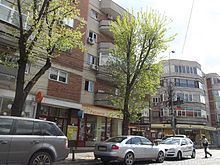 | ||
Renato din sa laj ion din dorobant i nu e njoseal n am c r i de credit
Dorobanți is a neighborhood in Sector 1, Bucharest. The neighborhood is dominated by red brick buildings and glass buildings. Main intersections/squares are Perla, Dorobanți Square, Lahovari, Charles de Gaulle and Quito Square. Main streets are Calea Dorobanților, Iancu de Hunedoara Avenue, Lascăr Catargiu Boulevard and a small part of Ștefan cel Mare Boulevard. The district features a large number of embassy buildings, and local cafes are regarded as meeting places of Bucharest's nouveau riche.
Contents
- Renato din sa laj ion din dorobant i nu e njoseal n am c r i de credit
- Renato din sa laj ion din dorobant i lema i love you viat a mea
- History
- Borders
- Transport
- References
Renato din sa laj ion din dorobant i lema i love you viat a mea
History
Calea Dorobanți is one of the oldest streets with heavy traffic in Bucharest. The area around the street was designed and built as an exclusive district. The current name was given to the street in 1878, after the Romanian War of Independence, as a tribute to the Romanian infantry troops (Dorobanți in Romanian) which fought in Pleven, Vidin and Grivitsa.
Borders
Dorobanți neighborhood is delimited in the south by Piața Romană, in south-east by Mihai Eminescu Street, in east by Polonă Street, Floreasca Avenue and the Floreasca district, in north-east by Primăverii neighborhood, in north by Herăstrău neighborhood, in west by Aviatorilor Avenue and Victoriei Plaza and in south-west by Lascăr Catargiu avenue.
